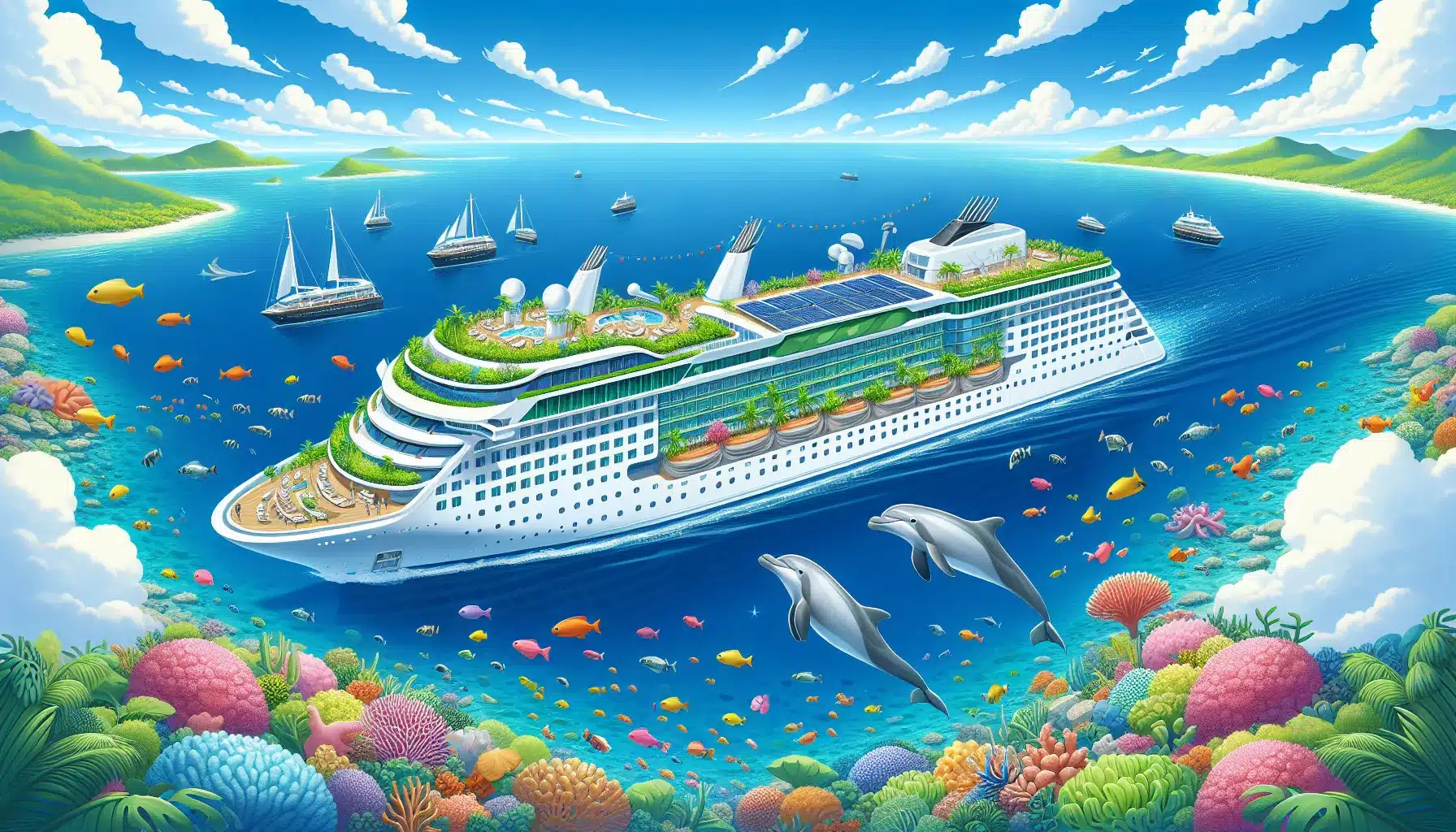In the world of travel and leisure, cruising has long been a favored choice for those looking to explore multiple destinations in comfort and style. However, the environmental impact of cruising activities has prompted both consumers and companies to focus on more sustainable practices. The shift toward eco-friendly cruising is not just a nod to environmental responsibility but also a necessary step to ensure the protection and conservation of marine ecosystems. Here, we explore the various eco-friendly initiatives being implemented by cruise lines and their significance in preserving our oceans.
The Environmental Challenge of Traditional Cruising
Traditionally, cruise ships have been massive contributors to ocean pollution, primarily due to their fuel consumption and waste management practices. The burning of heavy fuel oil not only emits large quantities of carbon dioxide but also other harmful pollutants including sulfur oxides and nitrogen oxides, which contribute to air and water pollution. Additionally, the disposal of untreated sewage and ballast water can introduce invasive species and pathogens to new environments, disrupting local marine life.
Transitioning to Sustainable Fuel Options
One of the most significant steps toward eco-friendly cruising is the adoption of alternative fuels. Many cruise lines are gradually shifting from heavy fuel oil to liquefied natural gas (LNG), which burns cleaner and results in lower emissions of sulfur oxides, nitrogen oxides, and particulates. For instance, AIDA Cruises, part of the Carnival Corporation, has pioneered the use of LNG with their ship AIDAnova, which is touted as the world’s first cruise ship to be powered at sea and in port by this less-polluting fuel.
Beyond LNG, some companies are exploring more revolutionary technologies such as battery-operated systems and fuel cells. These innovations are in the early stages but hold the promise of zero-emission cruising in the future. For example, Hurtigruten, a Norwegian cruise line, has plans to equip its ships with battery packs and biofuel to reduce emissions further.
Advanced Wastewater Treatment Systems
Modern cruise ships are increasingly equipped with advanced wastewater treatment systems that process sewage and gray water to a standard where it can be safely discharged without harming the marine environment. These systems use a combination of physical, chemical, and biological processes to remove contaminants, significantly reducing the impact of waste on ocean waters.
Cruise lines like Royal Caribbean and Norwegian Cruise Line have invested heavily in these technologies, ensuring that their ships not only comply with but often exceed regulatory requirements. This commitment not only helps protect the marine environment but also enhances the sustainability profile of these companies.
Reducing Single-Use Plastics
The fight against plastic pollution has become central to eco-friendly cruising practices. Single-use plastics are a notable contributor to marine pollution, often ending up in the world’s oceans where they pose a threat to marine life. Many cruise lines have initiated policies to eliminate or drastically reduce single-use plastics on board their ships. For example, MSC Cruises has pledged to eliminate single-use plastics and has already replaced them with environmentally friendly solutions across their fleet. These efforts are crucial in reducing the plastic waste that enters the ocean from cruise ships.
Energy Efficiency Measures
Improving energy efficiency on board is another vital area where cruise lines are making strides. From LED lighting and optimized hull designs to energy-efficient appliances and air conditioning systems, every aspect of ship operations is being scrutinized for energy-saving opportunities. These measures not only reduce the carbon footprint of cruising but also lead to significant cost savings for the companies, which can be reinvested into further sustainable practices.
Cruise lines are also implementing practices like shore power, where ships switch off their engines and plug into local power grids while docked. This not only reduces emissions but also helps reduce the noise and air pollution in port cities, contributing to a more sustainable interaction with visited communities.
Educating Passengers and Crew
Education plays a critical role in the success of environmental initiatives. Many cruise lines now offer educational programs to both passengers and crew about the importance of conservation and sustainable practices. These programs often include information on local wildlife, ecosystems, and how each person can contribute to their protection. By fostering a greater understanding and appreciation of the marine environment, cruise lines can encourage more responsible behavior that extends beyond the voyage.
Conclusion
As the demand for eco-friendly travel options continues to grow, the cruise industry’s efforts to adopt more sustainable practices are becoming increasingly important. By transitioning to cleaner fuels, enhancing waste management, reducing single-use plastics, improving energy efficiency, and educating stakeholders, cruise lines are taking proactive steps to minimize their environmental footprint and protect marine ecosystems.
For travelers looking to make more environmentally responsible choices, selecting cruise lines that prioritize these practices can make a significant difference. Not only does this support the health of our oceans, but it also promotes a sustainable tourism industry that can thrive without compromising the natural beauty and diversity of our planet. The journey towards eco-friendly cruising is ongoing, and with continued innovation and commitment, the future of cruising can be as bright and sustainable as the destinations it visits.
